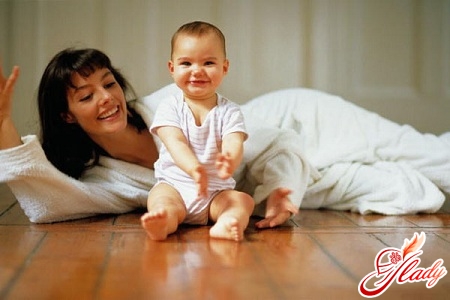 To answer this question correctly,First of all, we should understand what such a status means from a legal point of view. In other words, which of the fairer sex, raising a child (children) on their own, has all the legal grounds to be called a single mother. After all, widows and those divorced women who do not receive voluntary assistance from their official fathers in raising children, nor the alimony required by law, often say this about themselves. So, a single mother is considered:
To answer this question correctly,First of all, we should understand what such a status means from a legal point of view. In other words, which of the fairer sex, raising a child (children) on their own, has all the legal grounds to be called a single mother. After all, widows and those divorced women who do not receive voluntary assistance from their official fathers in raising children, nor the alimony required by law, often say this about themselves. So, a single mother is considered:
- a woman who produced a child out of official marital relations, and the fact of paternity is not established either voluntarily or in judicial instances;
- a woman who gave birth to a baby after 10 months (or more) after her official marriage was terminated;
- a woman who gave birth to a baby in a marriage or within 10 months after its termination, but the fact of paternity was contested, to which there is a corresponding decision of the courts;
- a woman who does not have legal marital relations, but who adopted or adopted a child.
This is how the status of a single mother is interpreted inall legal documents. In other words, these are women whose children do not have an official father. In their birth certificates, this column is either a dash or the data is written down from the mother's own words. Therefore, neither divorced women nor widows can call themselves this way. The same applies to those cases when the child's father is deprived of legal rights to raise the child. In each of these cases, there are specific mechanisms of state assistance, for example, forced collection of alimony, benefits for the loss of a breadwinner, and so on. But these women cannot claim the payments due to single mothers. Now let's take a closer look at the question of how much a representative of this category of citizens receives in the Russian Federation. First of all, it should be emphasized that a single mother has the same rights as a woman in a legal marriage, so she is entitled to all mandatory cash benefits associated with pregnancy and the birth of a baby. However, their amounts may differ slightly on the higher side. This primarily concerns additional payments from local budgets, which often vary depending on the region.
Government payments for mothers, including single mothers
First of all, it should be noted that all benefitsfederal level, related to pregnancy and childbirth, in 2016, a coefficient of 1.055 was applied. Therefore, their amounts increased by 5.5%. However, only those women who became mothers this year or are going to become them can count on such amounts of payments. Recalculations for the previous period are not carried out. So, let's move on directly to the federal payments themselves and how much they now amount to. One-time benefit It is entitled to women who are working or dismissed due to the liquidation of an enterprise, students or employees who have contacted a medical institution in advance to register for pregnancy for a period of up to 3 months (12 weeks). This type of benefit is paid simultaneously with the one that is due in connection with pregnancy and childbirth, if the expectant mother presents a certificate from the antenatal clinic along with other documents entitling her to maternity leave. Or after ten days, if this is done later. Women receive this payment at their place of work, study or service. As for how much it is in monetary terms, since January of this year the amount of this benefit is 490 rubles 79 kopecks. Benefit related to pregnancy and childbirth This type of benefit is also only available to working, serving or studying women and is paid in a lump sum for the entire period of maternity leave, which is:
- 140 calendar days for uncomplicated births;
- 156 calendar days for delivery with caesarean section or other nuances;
- 194 calendar days in case of the birth of twins or more children.
The scheme for calculating it changed in 2016.The calculation is based on the total earnings for the two calendar years preceding the year in which the maternity leave began. This amount is divided by the total number of days for these years. But now periods of temporary disability and additional days off for caring for a disabled child should be excluded from them. Thus, the largest permissible amount of payments related to pregnancy and childbirth, if they were not complicated and ended with the birth of one child, will be 186,986 rubles 80 kopecks. For female students, this type of benefit is assigned based on the amount of their scholarship. Women who have lost their jobs due to the liquidation of enterprises and are registered with the Employment Center can also count on maternity payments in the amount of 2,290 rubles 35 kopecks. Child care allowance for a child under one and a half years old As for child care payments, the maximum monthly amount for women who were in an employment relationship before pregnancy is 16,241 rubles 14 kopecks. Housewives can count on 2,453 rubles 93 kopecks if it is their first child, and for the second and subsequent children, 4,907 rubles 85 kopecks. Women, including single mothers, who have lost their jobs due to the liquidation of an enterprise, are paid about 9,815 rubles 71 kopecks. One-time benefit related to the birth of a child All women who have become mothers can count on this type of benefit, regardless of whether they worked or not. Its amount since January 2016 is 13,087 rubles. If a single mother is employed, she receives the payment at her place of work. Otherwise, she should contact the social security agency and submit all the necessary documents. Maternity capital This type of benefit is provided only once and only in the event of the birth of a second or subsequent child to a woman, including a single woman. Maternity capital is not issued as a cash sum. It can only be used when the child turns three years old. These funds can be used for:
- improvement of housing conditions, for example, to repay a loan for an apartment or a house;
- children's education;
- pension accumulation for mother;
- payment of kindergarten and school.
If you are a single mother, like any other married womanIf a woman wishes to receive maternity capital, she should contact the local Pension Fund office for the relevant state certificate and provide all the necessary documents. The amount of maternity capital this year will be 408,960 rubles 51 kopecks. Tax deduction A working single mother has the right to a double tax deduction until the child turns eighteen years old, and if he continues his education, this benefit will remain until he is twenty-four years old. Its amount is 2,800 rubles. For a disabled child dependent on a single mother, the deduction is due in the amount of 6,000 rubles. Benefits in payment of sick leave If a sick child of a working single mother needs her care in a hospital, the benefit depends on the duration of continuous work of such a woman. As for outpatient treatment, it is paid for the first ten calendar days depending on the length of service, and from the eleventh day it is calculated in the amount of 50% of her earnings and does not depend on the length of service. If the child of a single mother has not reached the age of seven, then the benefit is paid to her for the entire period of treatment, and subsequently up to fourteen years inclusive, she has the right to receive compensation for fifteen days of sick leave (in the absence of a medical certificate on the need to extend care).
Payments for single mothers provided for by city and regional budgets
Every subject that is part of an integralpart of the Russian Federation, independently determines additional payments for mothers, including single mothers. It is not possible to tell about all such benefits in each region. Therefore, we will dwell in more detail on the central part of our country, namely its capital. The Moscow government has provided the following benefits for this category of citizens.
There are also a number of other benefits in our country,provided for women who raise their children on their own and have the status of single mothers. For example, a newborn child from a single-parent family must be provided with free sets of clothes, if the baby is not yet one and a half years old, then his mother does not pay for cleaning and removal of food waste at the place of residence. She also has the right to preferential services at the milk kitchen according to the pediatrician's prescriptions, she is obliged to provide a discount of up to 50% on some medicines. Children of a single mother can eat for free in the school cafeteria. And this is not the whole list. In most regions, as in the case of the capital, there are their own payments, for example, at the level of local councils or mayors. In order to clearly understand how much and what kind of benefits single mothers are required to pay by law, they must contact the local social protection agency. It is there that authorized specialists will familiarize them with their rights and give comprehensive answers to all their questions. We recommend reading:









